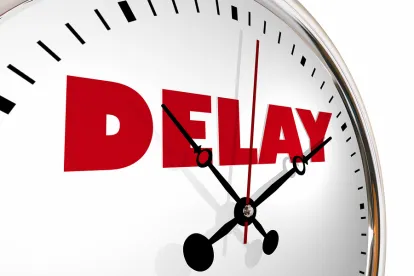The Court of Appeal decision in Mr Nobu Su v Clarksons Platou Futures Limited and another [2018] EWCA Civ 1115 from earlier this month concerns the interpretation and application of s14A of the Limitation Act 1980 (“s14A”) and when a claimant is deemed to have ‘knowledge’ of the negligence in order to extend the limitation period under s14A.
S14A
This provides a special extended time limit for bringing claims in negligence where facts relevant to the cause of action were not known at the date of accrual. Instead, the time limit is deemed to run for three years from the ‘date of knowledge’.
The ‘date of knowledge’ is the point at which: (1) a reasonable person would have acquired material and other facts about the damage suffered which would give him the requisite knowledge that the damage was sufficiently serious to justify issuing proceedings, and (2) knowledge has been acquired that the damage was attributable to the act or omission allegedly constituting negligence.
Facts
In July 2008, Clarksons Platou Futures Ltd (“Clarksons”) (a broker of freight forward agreements (“FFAs”)) brokered an oral agreement between Lakatamia Shipping Company Ltd (“Lakatamia”) and Mr Su (the beneficial owner of a number of shipping companies, collectively referred to as “TMT”) regarding the purchase and buy back (for a profit) of FFAs.
Lakatamia fulfilled its end of the agreement, however, TMT failed to buy back the FFAs. In March 2011, Lakatamia issued proceedings asserting in the particulars of claim that Mr Su was a party to the oral agreement and therefore was personally liable for TMT’s failure to buy back the FFAs.
In August 2011, Lakatamia was granted a freezing order against TMT and Mr Su and this was continued at an inter partes hearing in October 2011. In July 2012, Mr Su’s appeal regarding whether Lakatamia had established a good arguable case that Mr Su was personally liable was dismissed and the judge held that there was a good argument which must proceed to trial.
The Court’s judgement was handed down in November 2014 and it held Mr Su personally liable under the oral agreement and he was ordered to pay Lakatamia circa. $37.8m.
Mr Su then issued proceedings in November 2015 against Clarksons, alleging breach of contract and negligence in that they only had authority to broker an agreement between the relevant companies and as such Mr Su should not have been a party to the agreement.
Clarksons applied for summary judgement on the basis that Mr Su’s claims in negligence (and also for breach of contract) were time barred under the Limitation Act 1980.
Commercial Court Decision
Clarksons argued that, in relation to the negligence claim (under s14A), Mr Su had the knowledge required to bring an action for damages at the latest by July 2012 when his appeal of the freezing order was dismissed.
Mr Su had argued that it was not until the November 2014 judgement that he knew he had a cause of action against the brokers.
The judge held that the causes of action in both contract and negligence accrued in July 2008 when Mr Su became personally bound to the FFAs. He considered that Mr Su had no prospect of successfully arguing that he had only acquired knowledge of the negligence within 3 years of the November 2015 date when he issued proceedings (i.e. within the extended time limit of s14A).
Permission was granted for Mr Su to appeal the s14A “date of knowledge” point.
Court of Appeal’ s Judgement
In analysing Mr Su’s alleged knowledge, the Court considered the interpretation of s14A in the House of Lord’s seminal decision in Haward v Fawcetts [2006] UKHL 9.
The Court noted that knowledge does not mean ‘knowing for certain’ and ‘beyond possibility of contradiction’. Knowledge means knowing enough for it to be reasonable for a claimant to begin to investigate further.
The Court highlighted Lord Nicholls’ observation in Haward that it “does not mean knowing for certain and beyond possibility of contradiction. It means knowing with sufficient confidence to justify embarking on the preliminaries to the issue of a writ … the claimant must know enough for it to be reasonable to begin to investigate further.” In addition, ‘attributable’ means a real possibility that the damage is attributable to the act or omission allegedly constituting negligence – not a fanciful one.
Mr Su argued that there was significant uncertainty surrounding his personal liability and matters only became sufficiently clear and certain to meet the knowledge requirements in November 2014. This was for a number of reasons including (amongst others):
- Mr Su did not know what the broker had agreed with the defendant as the agreement was oral;
- Mr Su did not personally make a payment to meet Lakatamia’s exposure under the oral agreement whereas TMT did; and
- Clarksons initially maintained to Lakatamia’s solicitor that Mr Su had contracted on his own behalf, but subsequently changed their position and stated they had not told Lakatamia’s solicitor this.
The Court found that although ‘knowledge’ under s14A required more than a mere suspicion, by July 2012 Mr Su knew:
- Lakatamia had asserted in its particulars of claim that he was a party to the contract; and
- three judges considered that Lakatamia had a good arguable case that Mr Su was personally liable.
It was therefore clear by this time that Mr Su knew enough to have more than a mere suspicion and for it to be reasonable for him to begin to investigate the possibility that he was personally bound under the agreement and so had a claim against Clarksons. Further, at this point Mr Su knew it was a real possibility that his personal liability was attributable to the acts of Clarksons.
The Court therefore discounted Mr Su’s arguments and held that there was no real prospect of Mr Su establishing at trial that the relevant knowledge under s14A was only acquired in November 2014, thereby dismissing the appeal.
Comment
This case serves as a useful reminder of the s14A test of how a Court might extend the negligence limitation period by 3 years.
Whilst somewhat fact-specific, the judgement does provide clear guidance on how to interpret the ‘knowledge’ requirement of s14A.
It also reminds both claimants and defendants of the importance of keeping a close eye on the limitation clock where a claimant may need to resort to section 14A to extend time for bringing a Court claim. The question is not when a claimant first knew it might have a claim for damages against the defendant but when it knew enough to make it reasonable to investigate further and, if necessary, obtain professional advice on the claim.






 />i
/>i

